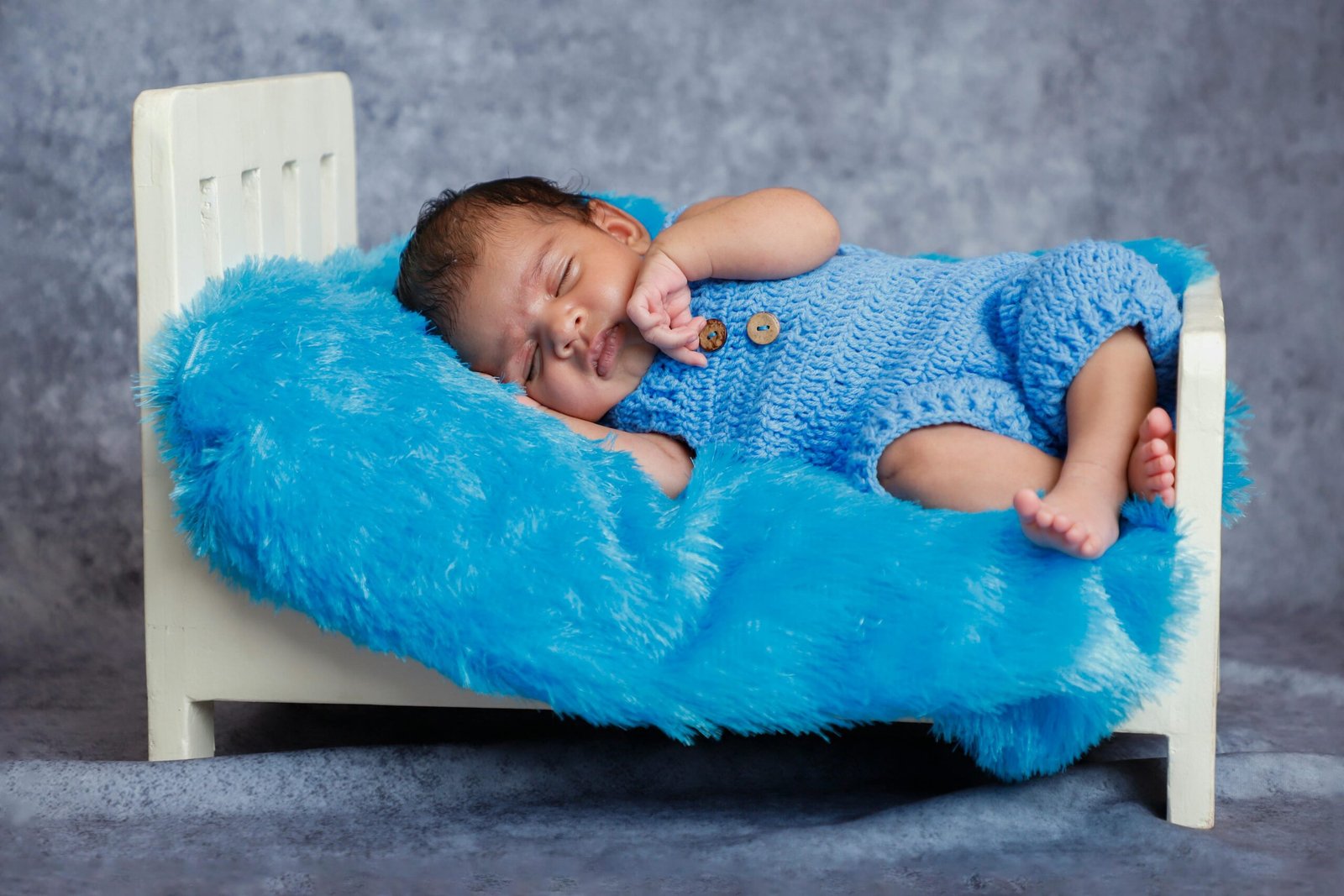Baby Winter Clothes
Discover the perfect selection of baby winter clothes to keep your little one cozy and stylish throughout the season. Shop now for essential winter coats, snowsuits, hats, mittens, and more.
Introduction
As the temperature drops and snowflakes start to fall, it’s time to bundle up your little bundle of joy in cozy winter clothes. From adorable snowsuits to snug hats and mittens, dressing your baby for the cold weather requires some thoughtful consideration.
What clothes to buy for winter baby?
Getting your infant ready for winter means choosing the right apparel for warmth and comfort during the frosty season. Here’s a closer look at each essential item for keeping your baby snug in the colder months.
Winter Coats: A must-have to fend off the chill, ensuring your little one is cozy during outdoor jaunts. Opt for coats with plush linings and hoods for maximum warmth and protection against the biting wind and snow.
Snowsuits: Crucial for sub-zero temperatures, particularly for outdoor fun or frolicking in the snow. These all-in-one garments offer comprehensive cold defense, enveloping your child from head to toe. Select models that are both water-resistant and windproof for enhanced coziness.
Fleece Jackets and Hoodies: These are ideal for layering, offering additional warmth without constraining your baby’s movements, suitable for both indoor and outdoor settings.
Mittens or Gloves: Essential for maintaining warmth in little hands during outdoor excursions. Look for designs that are simple to don and secure at the wrists. Mittens with attached strings can prevent loss.
Scarves or Neck Warmers: They provide added insulation around the neck area. Ensure they fit snugly but aren’t too constrictive.
Thermal Underwear: A foundational layering piece that adds significant insulation without bulkiness. Choose materials that wick away moisture to maintain dryness.
Warm Socks or Booties: Critical for keeping tiny feet toasty. They should be well-fitting, with non-slip soles for safety.
Layering Onesies or Bodysuits: These long-sleeved undergarments are the bedrock of a winter wardrobe, ideally made from soft, breathable cotton to layer under other attire or to be worn standalone.
Snow Boots: The final touch to your baby’s winter ensemble, these should be waterproof, insulated, and feature secure fastenings to ensure feet remain warm and dry.
The role of winter baby clothing
Protection from Cold: Winter baby clothing, such as coats, snowsuits, and thermal layers, provide insulation against chilly temperatures, shielding delicate skin from harsh weather conditions.
Maintaining Body Heat: By layering appropriately, winter clothing helps trap body heat close to the skin, keeping babies warm and preventing hypothermia or discomfort.
Preventing Hypothermia: Properly insulated winter clothing helps regulate body temperature, reducing the risk of hypothermia, especially during outdoor activities or extended exposure to cold environments.
Promoting Comfort: Soft, breathable fabrics used in winter baby clothing ensure optimal comfort for infants, allowing them to move freely while staying cozy and snug.
Protection from Elements: Hats, mittens, scarves, and waterproof boots protect exposed areas from wind, snow, and moisture, minimizing the risk of frostbite and skin irritation.
Supporting Development: Winter clothing designed with safety and functionality in mind promotes healthy physical development by allowing babies to explore their surroundings comfortably, whether indoors or outdoors.
How do I prepare my baby for winter?
Invest in Winter Clothes: Purchase essential winter clothing items such as coats, snowsuits, hats, gloves or mittens, scarves or neck warmers, thermal underwear, warm socks or booties, layering onesies or bodysuits, and snow boots. Ensure these items are in the right size and made from soft, breathable materials to keep your baby cozy.
Layering: Layering is key to keeping your baby warm without overheating. Start with a moisture-wicking base layer like thermal underwear, followed by a long-sleeved onesie or bodysuit, and then add additional layers like sweaters, jackets, or snowsuits as needed. Remember to remove layers if your baby starts to feel too warm.
Protect Their Skin: Cold weather can be harsh on your baby’s delicate skin. Use a gentle moisturizer to keep their skin hydrated and prevent dryness and irritation. Additionally, consider using a barrier cream on exposed areas like their face to protect against windburn.
Keep Them Hydrated: Cold weather can increase the risk of dehydration, so make sure your baby stays well-hydrated by offering frequent feedings if they are breastfed or formula-fed. If your baby has started solids, offer water in between meals to ensure they stay hydrated.
Maintain a Comfortable Indoor Temperature: Keep your home comfortably warm during the winter months, ideally between 68 to 72 degrees Fahrenheit (20 to 22 degrees Celsius). Use a room thermometer to monitor the temperature and dress your baby in layers accordingly. Avoid overheating by dressing them in too many layers or keeping the room too hot.
Limit Outdoor Exposure: While it’s essential for babies to get fresh air, limit outdoor exposure during extremely cold or windy days. If you do venture outdoors, keep outdoor activities short and dress your baby appropriately in warm winter clothing.
Ensure Safe Sleep Environment: Keep your baby’s sleep environment safe and comfortable by maintaining a comfortable room temperature and dressing them in appropriate sleepwear. Avoid using heavy blankets or quilts in the crib to reduce the risk of suffocation. Instead, use a sleep sack or wearable blanket to keep them warm while sleeping.
Practice Safe Car Seat Use: Ensure your baby’s car seat is installed correctly and use appropriate winter car seat safety measures. Avoid dressing your baby in bulky winter coats or snowsuits while in the car seat, as this can compromise the harness’s effectiveness. Instead, dress them in thin layers and use a blanket or car seat cover for warmth.
Monitor for Signs of Cold or Illness: Pay close attention to your baby’s well-being during the winter months and monitor for signs of cold or illness. Common signs of cold stress in babies include fussiness, excessive crying, flushed cheeks, and cold hands or feet. Contact your pediatrician if you notice any concerning symptoms or if you have questions about your baby’s health.
Winter Baby Safety Tips
- Dress Your Baby Appropriately: Layering is key to keeping your baby warm and comfortable during the winter months. Dress them in multiple thin layers, including a moisture-wicking base layer, insulating middle layer, and a waterproof outer layer. Avoid overdressing your baby, as this can lead to overheating. Instead, opt for breathable fabrics and adjust layers based on the temperature and activity level.
- Protect Their Skin: Cold weather can be harsh on your baby’s delicate skin, leading to dryness and irritation. Use a gentle moisturizer regularly to keep their skin hydrated. When venturing outdoors, apply a baby-safe sunscreen to any exposed skin, as the sun’s rays can still cause damage, even in the winter.
- Keep Them Hydrated: Dry indoor air and cold temperatures can increase the risk of dehydration in babies. Ensure your little one stays well-hydrated by offering frequent feedings if they are breastfed or formula-fed. If your baby has started solids, offer water in between meals to prevent dehydration.
- Create a Safe Sleep Environment: Maintain a comfortable room temperature between 68 to 72 degrees Fahrenheit (20 to 22 degrees Celsius) to ensure your baby stays warm while sleeping. Use a sleep sack or wearable blanket instead of loose blankets to keep your baby warm and reduce the risk of suffocation. Ensure your baby’s crib is free from hazards such as loose bedding, toys, or crib bumpers, which can pose a suffocation risk.
- Practice Safe Car Seat Use: Proper car seat safety is crucial, especially during the winter months. Ensure your baby’s car seat is installed correctly and use appropriate winter car seat safety measures. Avoid dressing your baby in bulky winter coats or snowsuits while in the car seat, as this can interfere with the harness’s effectiveness. Instead, dress them in thin layers and use a blanket or car seat cover for warmth.
- Monitor for Signs of Cold or Illness: Pay close attention to your baby’s well-being during the winter months and monitor for signs of cold or illness. Common signs of cold stress in babies include fussiness, excessive crying, flushed cheeks, and cold hands or feet. Contact your pediatrician if you notice any concerning symptoms or if you have questions about your baby’s health.
Conclusion-Baby Winter Clothes
In conclusion, baby winter clothes are crucial for keeping infants comfortable and safe during cold weather. These garments protect delicate skin, provide insulation, and enable mobility. By choosing quality winter attire and following dressing guidelines, parents can ensure their babies enjoy winter activities while staying warm. Prioritizing the right clothing allows babies to explore the outdoors and relax indoors with confidence and coziness.
FAQ-Baby Winter Clothes
- What are the important winter clothes for babies?
Important winter clothes for babies include coats, snowsuits, hats, mittens, scarves, warm socks or booties, layering onesies or bodysuits, and snow boots. - How should I dress my baby for winter?
Dress your baby in layers, starting with a moisture-wicking base layer, then insulating middle layers, and a waterproof outer layer. Make sure clothes aren’t too tight or loose, and consider the temperature and activity level. - How can I tell if my baby is too cold or too warm in winter clothes?
Check your baby’s temperature by feeling their chest or back. Signs of overheating include sweating, flushed skin, and fast breathing, while signs of being too cold include shivering, cold extremities, and fussiness. - Can my baby wear a winter coat in a car seat?
It’s safer to take off bulky winter coats or snowsuits before putting your baby in a car seat, as they can interfere with the harness’s effectiveness. Dress your baby in thin layers and use a blanket or car seat cover for warmth. - How do I wash and care for baby winter clothes?
Follow the manufacturer’s instructions for washing and caring for baby winter clothes. Use mild detergent, wash in cold water, and avoid fabric softeners or bleach. Air dry or tumble dry on low heat to preserve the fabric. - When should I replace baby winter clothes?
Replace baby winter clothes when they’re too small, worn out, or damaged. Check for signs of wear and tear like frayed seams, faded colors, or stretched-out elastic, and replace as needed for your baby’s comfort and safety. - Are there any safety concerns when dressing my baby for winter?
Make sure clothing fits well and doesn’t pose a choking risk. Avoid drawstrings, loose buttons, or anything that could come loose and be swallowed. Also, check for flame-resistant labels for added safety. - Where can I find affordable and good quality baby winter clothes? You can find a variety of baby winter clothes at department stores, baby specialty shops, online retailers, and second-hand stores. Look for sales, discounts, and clearance events to get affordable options without compromising quality.
Read Article: How To Fold Baby Clothes?















